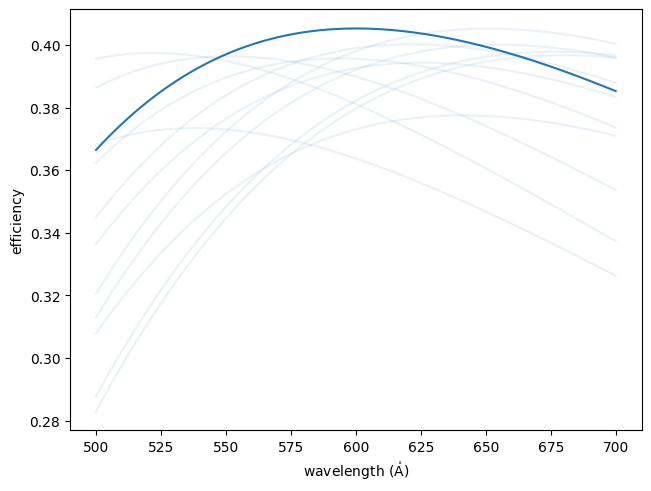ruling_design#
- esis.flights.f1.optics.gratings.rulings.ruling_design(num_distribution=11)#
The as-designed rulings for the ESIS diffraction gratings.
- Parameters:
num_distribution (int) – The number of Monte Carlo samples to draw when computing uncertainties.
- Return type:
Examples
Plot the efficiency of the rulings over the EUV wavelength range.
import numpy as np import matplotlib.pyplot as plt import astropy.units as u import astropy.visualization import named_arrays as na import optika from esis.flights.f1.optics import gratings # Define an array of wavelengths with which to sample the efficiency wavelength = na.geomspace(500, 700, axis="wavelength", num=1001) * u.AA # Define the incidence angle to be the same as the Horiba technical proposal angle = 1.3 * u.deg # Define the incident rays from the wavelength array rays = optika.rays.RayVectorArray( wavelength=wavelength, position=0 * u.mm, direction=na.Cartesian3dVectorArray( x=np.sin(angle), y=0, z=np.cos(angle), ), ) # Initialize the ESIS diffraction grating ruling model rulings = gratings.rulings.ruling_design() # Compute the efficiency of the grating rulings efficiency = rulings.efficiency( rays=rays, normal=na.Cartesian3dVectorArray(0, 0, -1), ) # Plot the efficiency vs wavelength fig, ax = plt.subplots(constrained_layout=True) na.plt.plot(wavelength, efficiency, ax=ax); ax.set_xlabel(f"wavelength ({wavelength.unit:latex_inline})"); ax.set_ylabel("efficiency");


